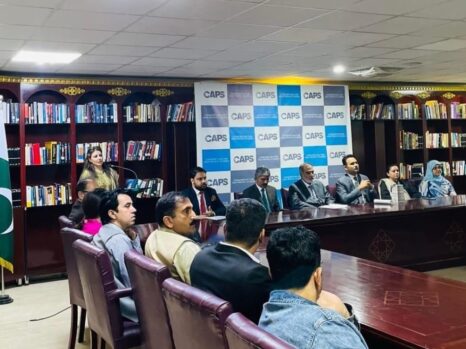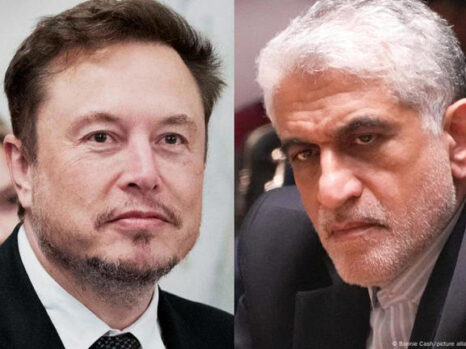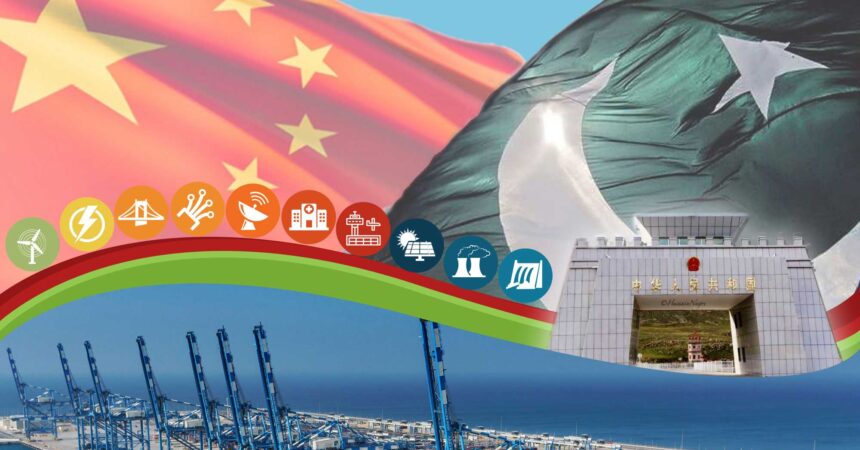This Insight reports on the progress of CPEC projects. It highlights the need for continued commitment and collaboration among all parties involved in the CPEC project to ensure its success.

Written By
Hadiqa Mir
Research Associate
rahadiqa@ndu.edu.pk
China–Pakistan Economic Corridor (CPEC) is a geo-strategically significant project for both China and Pakistan. It will enable China to get out of the Malacca dilemma and provide an alternative trade route to China. For Pakistan, CPEC is a ray of hope in the prevailing tough economic and geopolitical environment, where it has limited foreign policy options. The estimated cost of CPEC is $62 billion from 2015 to 2030. Domains of CPEC projects include investment in the energy sector, transportation infrastructure, i.e., roads and railways, development of Gwadar Port and city, Fiber Optics infrastructure and establishment of Special Economic Zones (SEZs) and industrial parks.

Year 2023 marks the completion of a decade since the start of the project. The subsequent visits of the Federal Minister for Planning, Development and Special Initiatives of Pakistan, Prof Ahsan Iqbal, and Chinese Vice-Premier He Lifeng signify the importance of CPEC for both states. The infrastructure and energy generation projects have been completed, and the outcomes are visible; however, it is only through constant evaluation that we can analyse hurdles and find ways to complete projects in time. Twenty-seven projects, totalling $19 billion, have already been finished, while 63 more projects with a cost of $35.2 billion are expected to be completed by 2030.

CPEC projects were divided into the short, medium, and long term. The short-term projects were further divided into two phases. The Early Harvest Projects (EHPs) to be finished in 2018 were part of Phase I. Phase II involved building essential infrastructure for energy projects, which was scheduled to be completed by the end of 2020 or early 2021. Phase-III projects with completion by the year 2025 included medium-term initiatives. The projects of this phase included the establishment of industrial parks and SEZs. In addition, the Long-Term Plan (LTP) is a conceptual framework for the CPEC project. It is a national plan approved by both Chinese and Pakistani governments that provides macro guidance for implementing various projects. Development of railway infrastructure and operationalising other long-term projects would be the main goals of CPEC Phase-IV. This phase is anticipated to be completed by 2030.” CPEC has been one of the most popular and well-supported projects in the history of Pakistan. The stakeholders of the project tried to utilise all available resources to ensure timely completion of this mega project”
Since the inception of the project, CPEC has been one of the most popular and well-supported projects in the history of Pakistan. The stakeholders of the project tried to utilise all available resources to ensure timely completion of this mega project. The energy projects, including coal, wind, hydro and solar power, were planned to be completed by 2018 as part of EHPs and phase-I projects to fulfil the domestic and industrial energy needs of Pakistan. So far, 14 projects have been completed in the energy sector. Sahiwal Coal-fired Project (1320 MW), Coal-fired Power Plant at Port Qasim (1320 MW), China Hub Coal Power Project (1320 MW), Engro Thar Coal Power Project (660 MW), Quaid-e-Azam Solar Park (1000 MW), Hydro China Dawood Wind Farm (50 MW), UEP Wind Farm (100MW), Sachal Wind Farm (50 MW), Three Gorges Second and Third Wind Power Project (100 MW), Matiari to Lahore ±660 KV HVDC Transmission Line Project, HUBCO Thar Coal Power Project (330 MW), Karot Hydropower Project (720 MW), SSRL Thar Coal Block-I 7.8 mtpa and Power Plant (1320 MW) and HUBCO Thal Nova Thar Coal Power Project (330 MW).
Under the CPEC projects, two projects are still in progress, while five more are being considered. The unfinished projects include Suki Kinari Hydropower Project (884 MW) and Coal-Fired Power Project at Gwadar (300 MW). Under-consideration projects include Kohala Hydropower Project (1124 MW), Azad Pattan Hydropower Project (700.7 MW), Thar Mine Mouth Oracle Power Plant and Surface Mine (1320 MW), Cacho Wind Power Project (50 MW) and Western Energy (Pvt.) Ltd. Wind Power Project (50 MW).
In the transport and infrastructure sector, six projects were completed under CPEC including Havelian-Thakot Section of KKH Phase II, Multan-Sukkur Section of Peshawar-Karachi Motorway, Pilot Project of Digital Terrestrial Multimedia Broadcast (DTMB), Lahore Orange Line Metro Train, Khunjrab to Rawalpindi – Cross Border Optical Fiber Cable, and Motorway from Hakla to D.I. Khan. All the projects were completed as EHPs except for the Orange Line project, which was completed in 2020. Moreover, five other projects are in the construction phase, i.e., Zhob-Quetta Road (N-50), Nokundi-Mashkhel Road, Khuzdar-Basima Road (N-30), M-8 Hoshab to Awaran Road Section and Shandur-Chitral Road (KKH Alternate Route). In addition, eight projects are in the pipeline, whereas the final five will be long-term projects.
Another major area of cooperation under CPEC Phase–III is the construction of SEZs to expedite and facilitate industrial cooperation and boost economic activities between China and Pakistan. Four SEZs are under construction, including Allama Iqbal Industrial City, Boston SEZ, Rashakai SEZ, and Dhabeji SEZ. The work on these SEZs started in 2019, 2020, 2020 and 2023, respectively and is still in process. Besides that, there are various projects under consideration, including the Industrial Zone in Mirpur, Industrial Park on Pakistan Steel Mill Land, ICT Model Industrial Zone, Moqpondass SEZ and Mohmand Marble City.
In addition to the completed projects, there are many under-construction projects in Gwadar as part of CPEC. These projects are New Gwadar International Airport, health facilities including Pak-China Friendship Hospital, Desalination Plants of 1.2 million gallons per day (MGD) and 5 MGD. Apart from that, there are several projects under consideration as well, including a Landfill Project, fishermen’s making industry on Gwadar West Bay, Gwadar Smart Environment Sanitation System, construction of breakwaters, fish landing jetty and dredging of berthing areas and channels.
The Pakistan Vocational and Technical Education Capacity Building Project, Pakistan Vocational Schools Equipment Upgrading and Renovation Project, Poverty Alleviation Training, and Emergency Relief Supplies for Increasing National Disaster Management Authority Disaster Preparedness Capacity are the completed projects in the Social and Economic Development sector under CPEC. In addition, there are 11 projects under construction, and ten are under consideration as well.
CPEC projects have received equal priority from each government despite differences of opinion regarding the agreement’s terms and conditions. The prompt completion of projects illustrates the importance that all stakeholders gave to the project; however, some projects experienced delays due to technical or budgetary issues. For instance, SEZ near Faisalabad and two hydroelectric projects in Azad Kashmir (Kohala Hydropower Project and Azad Pattan Hydropower Project) seem to be progressing slowly. The disagreement over the parameters of the agreement was the cause of this delay. Furthermore, the most expensive project under CPEC, Main Line-1 (ML-1), which will modernise the railway from Peshawar to Karachi, costing $6.8 billion, was held by China as it was reluctant to work at the one percent interest rate demanded by Islamabad. In this regard, the CPEC Authority Ordinance was passed in 2019 by the government to create the CPEC Authority and ensure the speed of work and progress on CPEC projects. The authority has a great deal of autonomy as well as enormous financial and managerial capabilities.
In the 11th JCC Meeting held in April 2023, “Both sides showed satisfaction on the efficient execution of various CPEC projects and concurred that all outstanding matters would be amicably resolved in the spirit of traditional cooperation, mutual understanding, complete trust and brotherhood. Furthermore, the progress on four priority SEZs was declared adequate and concurred to quicken the pace of advancement in order to draw the relocation of high-quality enterprises. Both parties expressed their appreciation for the signing of the Framework Agreement for Industrial Cooperation and agreed to hold bi-annual meetings to monitor its implementation.”
Now, we have entered phase–III of CPEC, i.e., completion of SEZs, and work is going on at a good pace. Minor differences between parties, political instability and uncertainty might have impacted the pace of projects; however, there is no doubt that there is political will and consensus on the usefulness of CPEC. There may be differences in terms and conditions of agreements, but everyone acknowledges that CPEC is the only opportunity in the prevailing geopolitical environment that can ensure Pakistan’s economic development and prosperity. The aforementioned evaluation of CPEC projects validates the argument that all stakeholders and successive governments have contributed to this mega-national cause that can alter the economic condition of Pakistan and increase the geostrategic and geopolitical significance of the country.














